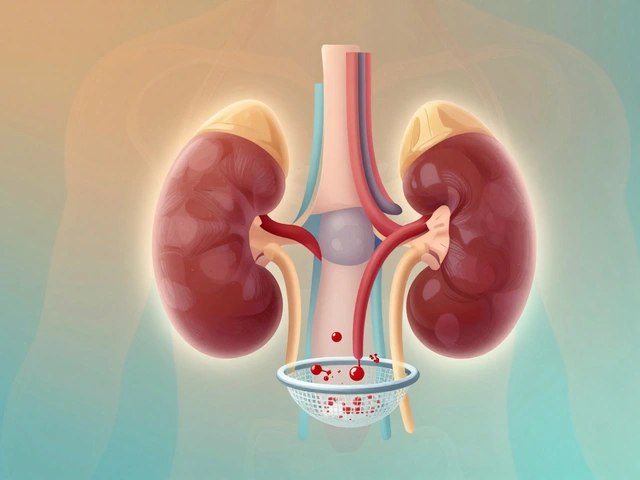Autoimmune diseases — what they look like and how to handle them
Autoimmune diseases happen when your immune system attacks healthy parts of your body. That can show up as joint pain, skin rashes, fatigue, numbness, digestive changes or thyroid problems. Some conditions flare for a few days, others stick around for years. The key is spotting patterns early and getting tests that match your symptoms.
Examples you’ve probably heard of: rheumatoid arthritis, lupus, Hashimoto’s thyroiditis, type 1 diabetes, multiple sclerosis and celiac disease. Each one behaves differently, so treatment is tailored. Still, common threads — unexplained tiredness, recurring inflammation, odd rashes or new nerve symptoms — should push you to see a doctor rather than shrug it off.
How doctors check for autoimmune disease
You start by telling a clear timeline: when symptoms began, what makes them better or worse, and what else is going on in life. Blood tests look for inflammation (CRP, ESR) and disease markers like ANA, RF, anti‑CCP, anti‑TPO or tissue‑specific antibodies. Doctors may order imaging (X‑ray, MRI, ultrasound) or a biopsy for tricky cases. If needed, you’ll see a specialist — most often a rheumatologist, neurologist, endocrinologist or gastroenterologist.
Don’t forget baseline lab checks before starting treatments: CBC, liver and kidney tests, and sometimes immune panels. If you’re starting steroids or long‑term immunosuppressants, bone density (DXA) and vaccination status are usually checked too.
Practical day‑to‑day tips to reduce flares
Medications matter: NSAIDs, short steroid courses, disease‑modifying drugs and biologics (like TNF blockers) control inflammation and prevent damage. Stick to prescriptions and tell your team about side effects. If you’re on strong immune suppression, avoid live vaccines unless your doctor says it’s safe.
Lifestyle steps make a real difference. Sleep consistently, move gently (walking, swimming, yoga), manage stress with breathing or short therapy sessions, and eat mostly whole foods — vegetables, beans, fish and olive oil. Track what brings on flares: a food, poor sleep, an infection or extra stress. That pattern helps you plan rest days or short treatment changes with your clinician.
Build a simple care kit: a logged list of meds and doses, recent lab results, a symptom diary and a contact list for your doctors and pharmacist. A pharmacist can flag drug interactions and cheaper but safe alternatives when cost is an issue.
Get urgent care if you have high fever, trouble breathing, severe chest pain, sudden vision loss or rapid weakness. For regular follow‑up, keep scheduled blood tests and imaging, and talk openly about mood and sleep — mental health affects autoimmune control too.
Start small: write two weeks of symptoms, book a primary care visit, and ask for the specific blood tests for your main symptoms. With a clear record and the right team, most people get better control and fewer surprises.
In my recent research, I came across an interesting connection between blood clots and autoimmune diseases. It seems that individuals with certain autoimmune conditions may be at an increased risk of developing blood clots. The reason for this link is due to inflammation and an overactive immune system, which can cause damage to blood vessels and lead to clot formation. It's essential for those with autoimmune diseases to be aware of this potential risk and take necessary precautions. Consult your healthcare professional for more information and personalized guidance on managing this risk.



